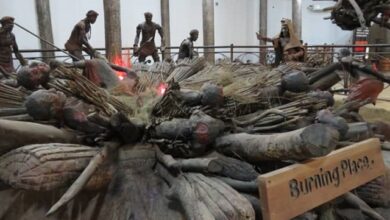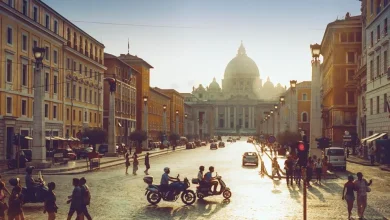Faded glory of steamship on Lake Albert
Winston Churchill, a well-traveled man who visited Uganda in the 1940s, declared that the ship had the best and best-outfitted library float in the whole globe.

Buliisa: The SS Robert Coryndon was once the life of Lake Albert Marine Services from 1930–1962. Natural disasters and fate ruined it, leaving a wreck that is no more.
It was named after Sir Robert Thorne Coryndon, the then governor and commander in chief of Uganda between 1918 and 1922.
Coryndon’s glory years were between 1930 and 1962, when it sank and left its formidable hulk half-peeping out of the blue-green water, which is no longer in existence.
However, by 2009, she was still unsalvageable and partly submerged in the lake. By the beginning of 2012, her wreck had been taken away “in bits and pieces by cutting all the metal remains for scrap, and only her aft king posts were still visible above the water.
It was built by the shipbuilding company Thorneycroft & Co. in 1929, based in Southampton. It measured 207 feet (63 meters) and weighed 860 tons.
The parts would be numbered and disassembled for the sea journey down to Mombasa, from where the pieces would be transported by rail to Lake Albert and reassembled on the shore.
The SS Coryndon was the jewel of British colonial administration in Uganda, winning admiration from many who traveled in it either for business or leisure.
This ship was the first and only operational Class ‘A’ ferry with modern marine services in Uganda. It was owned by Kenya and Uganda Railways until 1948, when the authority became East African Railways and Harbours Corporation.
It plied the Butiaba-Congo water route, passing through Pakwach in Nebbi district. It traversed the routes of Panyimur to Pakwach, Pakwach to Ndora, and then Kasenyi and Mahagi Ports in the northern parts of the Belgian Congo.
John Gaweera, an elder, says that in the past, many people would converge on Butiaba Port to use different vessels to transport goods and people across Lake Albert, and the great ferry was a major means of transport.
Winston Churchill, a well-traveled man who visited Uganda in the 1940s, declared that the ship had the best and best-outfitted library float in the whole globe.
In the year Uganda got independence, the country experienced a great flood, which caused major destruction of the harbor and devastated Butiaba’s thriving marine industry.
The SS Coryndon and several others docked at Butiaba and ran aground on account of the flood. Gaweera recalls that many people got stranded as it became difficult to travel to Congo and West Nile via the lake route.
It became hard to move the steamer’s body; it remained until a time when the East African Railways and Harbours Corporation decided to put it up for sale.
Interestingly, the same flood that brought down the SS Coryndon is credited with the formation of a second falls on the Albert (white) Nile, which was named after Uhuru Falls, close to Murchison Falls.
Many people, including the then Minister for Public Service Henry Kajura, tried to resurrect the ship, but in vain. However, the dead-looking ship continued to attract the attention of tourists and fortune hunters.
Coryndon remained a decaying relic on the shore for over 30 years. In 1967, East African Railways and Harbours put out a tender for the sale of the Coryndon and other smaller vessels based at Butiaba.
The then-Indian businessman Akberali Al-Libhai’s dream of reviving Coryndon in 1967 was short-lived as then-President Amin Dada suddenly ordered all Asians to leave the country within 90 days in 1975.
Do you have a story about your community or an opinion to share with us? Email us at theugreports@gmail.com.






